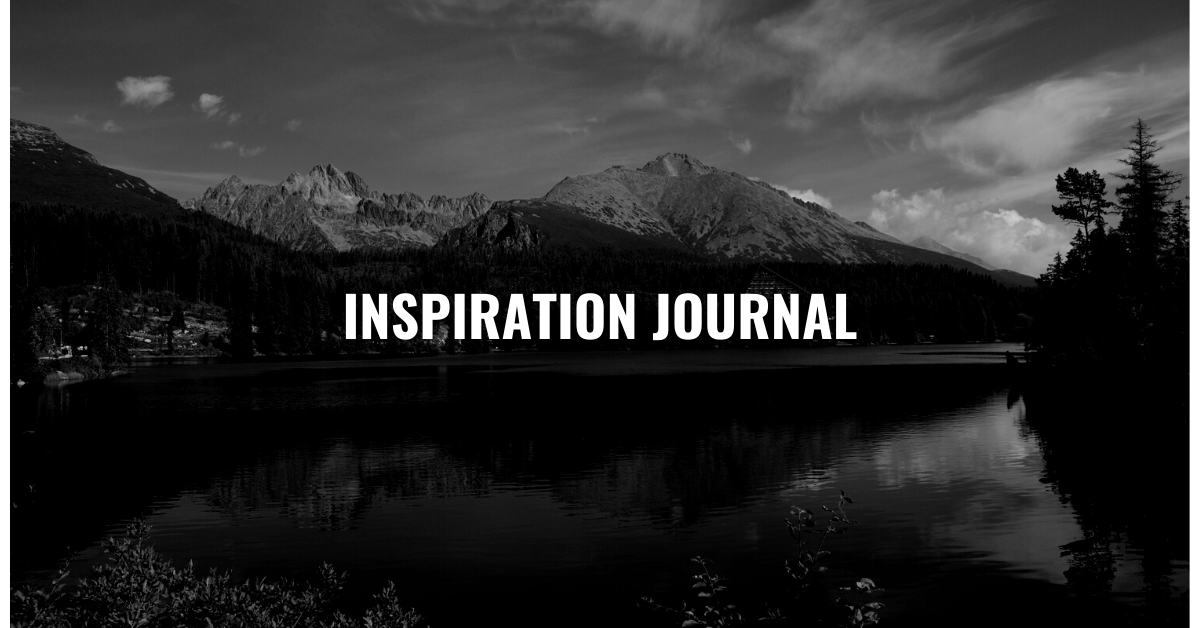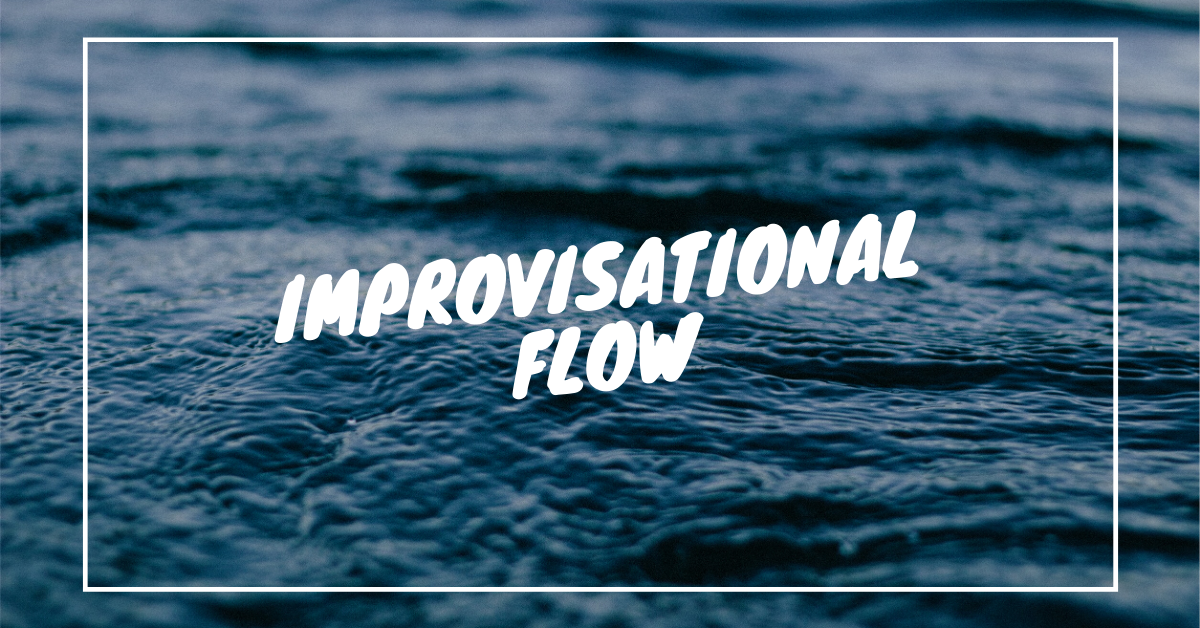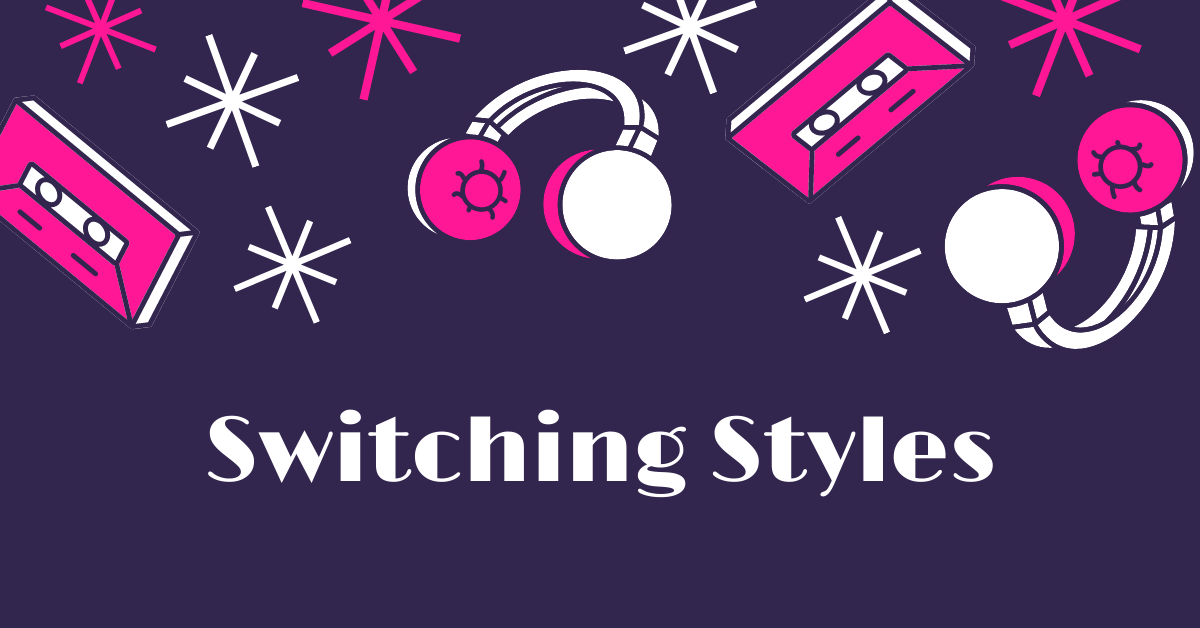Organize your practice and get inspired. Download the journal here: https://jazzedge.com/lessons/tci-exercise-14/
Hey guys, Willie Myette, creator of jazz edge, I want to welcome you to this podcast for the confident improviser. This is podcast episode number 14. So today we are going to be talking about how to create and use inspiration journal and inspiration journal is a great way to organize your practice and get inspired and I’ll go through it in today’s podcast episode. First of all this podcast is works great with the confident improviser program, found the jazz edge. And the resources that I’m going to talk about in today’s podcast can be downloaded from the competent improviser exercise number 14. Lesson page. Remember, you can also find replays of this podcast if you just go back to the confident improviser.com. Alright, so how to create and use an inspiration journal. Right? So first of all, an inspiration journal is exactly what it is. It’s just a place where you can write down different ideas that you are inspired by, right and this might be chords, you know, chord voicings, it could be rhythms, it could be licks, it could be two handed licks. It could be comping rhythms, sky’s the limit, whatever it is that you find is interesting to you, you put into this into this inspiration journal right now, what I did for you is I created a inspiration journal, you know, basically a template that you can download printout and then you could utilize this as a start for your, your inspiration journal, keep wanting to say improvisation, right? So you’re seeing this inspiration journal that we have, you know, a Grandstaff here for measures. And then you’ll notice that it starts with an original key. And then new key number one, new key number two, new key number three. All right, so basically, what’s happening here is that this is showing you Hey, look, put in your original, and then put in at least three different keys, don’t worry, I’m going to show you some examples of how this all works in just a second. The other option is just a single line, write the original key and this goes into five other keys. So that gives you your whole six keys, right. And then the last page is all just blank, you get three staves of blank Grandstaff paper, and three staves of just a single note, you know, right hand line, you know, just one stave, okay? So you could utilize those to create out your inspiration journal. Alright, so let’s take a look at an example here, because it’s going to be a lot easier once you see an example. Alright, so here is a, you know, just this little, you know, lick over E minor seven, to a seven, flat nine. In the left hand, all I’m doing is a very simple root three on E minor, so it’s E and G, and then my root three, seven on the a seven chord, which is a C sharp and G. And the right hand, I’m starting on D. Okay, so I started the D, which is the seventh, fifth,
third, root,
third 11th or four, five, and I go to the flat nine on the eighth seventh to the root to the seventh, and then back to the roots. Okay, so a pretty basic, you know, lick phrase here, but I like the sound of it. So I want to remember that right. So okay, so now I’ve written it out in my original key. You notice what I wrote here is on the last two measures measures three and forks. Remember I told you it was four measures on the line? Well, this lick here is only two measures long, so then I’ll just leave the last two measures blank, right, then I go to my new key number one, you see that I’m in the key of F, I got one flat here. So now I’m going to play an F. So what I’ve done is I’ve written it out in the new key, I have it here, a minor to D seven, I have the left hand, I have the right hand, it’s all written out. So now if you’re listening to me in the car, or something you’ll see on this, like when you take a look at the lesson, in exercise 14, you’ll see that what you’ll find on the screen here is that I have written out the original exercise or the original lick the original idea, the original thing that I put in my inspiration journal, I have now written it in a new key, hey, which key should I write it in, write it in whatever key you want, or the original key was in the key of C major. So I went to F major next. What’s the next one? I’m done. Okay, here I’m going to E flat. So now I’m starting on G minor.
And you’ll notice that your fingering will likely have to change when you move into other keys. This is what is really great about moving these licks into other keys is that it forces you to have to figure out new fingering for these patterns, right so there are in the key of B flat, and finally, I’m going to go to the key of G. So I’m going to start on my B minor chord, it’s now what I should be able to do is I should be able to go through and play each one of these keys, one after another, I’m gonna have to scroll a little bit, so bear with me. So here it is in C. Here it is an F. Here it is in E flat. And then finally, here it is in G. Now I could keep going, and I could play in all 12 keys if I want to. But the reality is, I found that if you go into at least four or five, six different keys, that usually gives you enough to be able to kind of get the idea of the lick down, understand it, and then have it in your memory, all right, and be able to you know, you know, get the facility to be able to play it in real time, right? If you want to go through all 12 keys, that’s fine. But I usually reserve that for the licks and whatnot, that I really want to make sure that I know all all around the piano, okay, so those real special licks, or chords, or you know, whatever, those are the ones that you really want to go through all 12 keys, because obviously, going through all 12 keys can take quite a bit of time. So now when I move on to the single note line, you see I have a very simple c seven here. And then I have you know, there’s this, this basic little line here, this basic improvisational phrase here. I like that, okay, it starts on the E flat and it goes up to the E triplet, right up to the seventh. And in the fifth to the sixth, back to the fifth. So in C, it’s E flat, G, A, B flat, G, ag. Okay. So, there, you’ll notice that I don’t have any left hand written, why because it’s really not about the left hand, it’s really the right hand that I’m really focusing on, you know, trying to remember. So I might do a rootless chord voicing, I might do a root three, seven chord voicing, I might do a root seven, it could even be a baseline. Now you see that I moved into f here as well.
I can move this
around, but it isn’t cheap.
He flat. Right, so
I can move that lick all all over the place. Now what you will notice is that sometimes some of these legs are gonna work well in some keys, not well, and other keys. Like if I move this to D, write that F natural up to the F sharp may feel a little bit weird, you know, you might have to work that out and practice that a little bit more. The point though, here is that you can do two handed or a Grandstaff full staff, you know, write that out. So write out the left hand and the right hand. But you can also just write out the right hand as well. You don’t have to write out the cord. Okay, I oftentimes like doing this kind of notation, just the right hand line, when it’s just some, you know, improvisational phrase that I want to remember, I don’t really care about the left hand, because I’ll put in whatever left hand I want at the time. Right. So this is a great way of being able to document what’s the lick that I want to remember, right. So this works really well. Now, you can also utilize this technique to write down different chord voicings that you like the sound of check out some of these core voices these sounds really cool, right? So here is a C minor 11 voicing. So here in the left hand, I have C, G, and D. in the right hand, I have a flat F, B flat D. Now I’m going to tell you that this voicing is very difficult to be able to hit depending on the size of your hands, right? It’s okay, I’m still going to write down the voicing I can reach it. But let’s say that you can’t reach that voice. It’s still good to write it down. Because even if you can’t reach a chord, you can still arpeggiate it.
So you can still utilize the court in arpeggiated form. So don’t think that has to this only has to be four chords that you can reach. No, it can be, you know chords that maybe you can’t reach, but you still want to write them down, just to remember what’s going on. Now you’ll notice here what I did in the analysis here as well, I wrote in the analysis in terms of, you know, each note how it relates to the chord, so I have the root, the fifth and the ninth, and blow this up a little bit so you guys can see it, right. And then I have flat 311, flat, seven, nine. Now, remember this too, you can always look at these chords and say, okay, maybe if you can’t reach that, but take off the top note the D, and then move the four notes in the right hand, and then just in the left hand, play root five. Now you get that beautiful sounding chord. Now, take a listen to that, versus the a version, B version. You can hear that top note in that B version of that voicing, okay. But and don’t get confused with the A and the B, I use that in my rootless voices, I’ve just using a and b just like, here’s voice of one, here’s voicing two. Okay. So maybe I should just say, here’s one. Here’s the alteration is the voicing. Here’s the alteration. Or I should say, here’s the voicing, here’s the alteration however you want to look at. But the point is that I could take out that top note right? That D, kind of rearrange the way that my fingers are playing that chord, I can now hit that chord no matter what size hand I got. And it still sounds really good. Okay, so you see how I could take the voicing, I could use it as an inspiration, I could play around with it, and then I could come up with something that works in my hand size. Here’s another voicing this f seven sharp 11. Now here, the point I want to make is that the analysis doesn’t have to be Oh, route 379, sharp 1113, okay, which is what’s going on here, what, seven, nine sharp 1113, you can also just analyze it using more of a text based approach. So here I said, are three, seven in the left hand, three, seven, right, when a major triad built on the second, that’s a major major triad built on the second, which is G. So it’s a G
major G
major triad. So this type of analysis makes it a little bit easier for me to kind of be able to quickly recall that and utilize it somewhere else. All right, route three, seven, in the left hand, with a major triad built on a second, let me do this on C seven, the root three, seven in the left hand, C, E, B flat major triad, built on the second D major triad. There we go. Let me do it on B flat, B flat, D, a flat and the left hand is my root three, seven major triad built on the second, the second is C. So your analysis does not have to get into you know, the third day seven sharp 11 You don’t have to you don’t have to dive in that deep. You can kind of just, you know, write notes for yourself to something that you’re going to be able to understand later. Especially when you get into like things like portals. Rather than writing out all of the portals
CFB flat,
you can just simply say portal built on the route right now I know of if I were to write down for myself quartal built on the root, I know that it’s two stacked perfect fourths built on the root. Here it is and see, okay, so portal built on the root, and then maybe in the right hand, minor triad on the on the ninth. It gives a nice such for sound. Third, and they’re gonna create like a minor 11 voicing. Okay. But anyway, the point is that I could kind of write notes and use more of a text based approach. And it’s a little bit easier to understand my analysis. Last thing is, you can also use this inspiration journal to write down rhythms that you like, so here’s a rhythm that I like, but triple A d by d by dy, but triple ed d by d by dy. Okay, so here’s a rhythm I like, Alright, well, now, you know, I can write that down, I could write down a bunch of different rhythms that I that I enjoy, and and I can use them as inspiration for practice. So let’s talk about that for a second. So, you know, I said that you can utilize this inspiration journal to help, you know, organize, but then also Well, when I say organize your practice, and get inspired, so how do you I think you understand the organization, but let’s talk about that. So when you sit down to practice, you know if you have, I don’t know, a half an hour an hour to practice Maybe you might say, Okay, look, you know what, I want to take 510 minutes and go through my lick journal. So then what you can do, I literally use the lick journal or inspiration journal. All right, I want to take 510 minutes and go through my inspiration journal. So I’m going to pull out that inspiration journal right now that might be all of those sheets might be in a binder, maybe what you might decide to do is get a spiral bound staff paper notebook and do your own inspiration journal, whatever, if you utilize the ones that I’ve created for you, and you download and print them, I suggest putting them in a three ring binder, so you keep it all nice and organized. Alright, so then what you do you, you know, pull out that inspiration journal, and maybe you go to the corn section and you like, you know, have that, that chord there again, and maybe what you do is, you know, for five or 10 minutes, you just try messing around with that chord. You don’t see like, Can you move it around to other, you know, other places on the staff. Right? So here I am on C minor. Well, let me go ahead and do this on F. Alright, so now what do I got? So there it is on F. Now what you might notice is when you move to another key, oh, lo and behold, that’s a little bit easier to be able to hit that, you know, in the right hand, here it is. In G, that might be tough again, to be able to hit that. But the point is, you take the chords during that practice time you’re looking for something to practice, this is a great way to organize your practice, write down those chord symbols of those chord voicings that you’ve been wanting to learn, write, write down in the original key, write it out and transpose if you want, or transpose it on the fly completely up to you how you do that. But the point is, you go back to that journal, and that’s a great way of knowing Oh, these are the voicings that I’ve been wanting to learn, rather than sitting down at the piano or not knowing Hey, hey, what what what am I doing? Okay, those are the voicings that I wanted to learn. Now, you might also sit down and say, hey, look, I just want to like be inspired right now. And I just want to like, you know, maybe I’ve done my practice time. And I’m going to come back to the piano a little bit later in the day. And I just want to like have some inspiration. Well, this inspiration journal, you know, you don’t have to write down licks or ideas that you’ve gotten from other people.
These could be your own
licks and ideas. Right? So maybe you have like a C seven chord here. And you think, Okay, well, you know what, I’m going to use that altered scale. That’s interesting. Okay, let me let me take that. Let me let me move that idea around into a bunch of other chords, right? Or maybe you might start the beginning part of a song. Maybe you write in your inspiration journal, something like this.
Okay, yeah,
I like that. I don’t know where I’m gonna go with it yet. But I like you might you write down something you played around with an idea, you’ll write it in your inspiration journal. And then when you’re looking, you know, to, you know, work on some improv or create a song or you know, whatever, you pull out that inspiration journal, and there it is waiting for you. Okay, so, to wrap up, how do you use this, this inspiration journal, you use it, whichever way works best for you. My suggestions are this number one, when you come across some licks that you like, or chord voicings, or rhythms, you know, whatever it is that you like, that you see written in music and might be, you know, in the jazz edge music, it might be in a real book, it might be something you transcribe, transcribed, it might be something that you saw somewhere else, doesn’t matter. Okay, what you’re doing and the idea that you should have in mind of this inspiration journal, is you’re taking all of these other sources, right? All these disparate sources, you know, multiple sources, you taking the information that you like, that you want to, you know, review, and you’re bringing it into your inspiration journal. So this inspiration journal is what inspires you. Okay? This isn’t stuff that like, well, I really should practice this. No, this is the stuff that you really want to practice. Now, as I said, in the TCI, 14, inspiration lesson, you don’t have to write out the lyrics, right? If you want to, like if you’ve got it in sheet music form, you can print it, cut it out, and literally just paste it right into your inspiration journal. That’s fine as well. You could use things like Sibelius, Muse score, whatever you Create your own, it’s completely up to you this inspiration journaling that I that I’m giving to you, though, you could download it, you can print off all those sheets. Page Number three is blank, it doesn’t have any title, no logo, nothing like that. So you can print out those, many of those, put them in a binder for yourself. Or like I said, you could just get a manuscript book and that would be absolutely fine also, but you use the inspiration journal, however it works best for you. I like to do it for lyrics for chord voicings, for rhythms, maybe tune ideas, maybe even reharmonization ideas, whatever it is, but that journal is a great place of bringing all that material back to one centralized location. Okay. And then when you’re going to sit down and you’re going to practice and you’re looking for some inspiration, you’re looking for something to practice, you’re looking to, you know, compose or improvise or whatever, you go back to that inspiration journal, and bam, there you go, you got something that can help you organize your practice, and definitely inspire you. Alright, so that’s it for. That’s it for me. Be sure to go back to the confident improviser exercise number 14, you can download the inspiration journal and and also download the examples that I was showing in this podcast. Right. And then of course, if you’re a member of jazz edge and working through the confident improviser, please be sure to join me on Thursdays, you know, always check the links on the site, make sure there is no change in times. But Thursdays at 1pm is when I do my live q&a session for all of my jazz edge members. If you’re not a jazz edge member, take a look at jazz edge comm it’s a great site, great community, a lot of incredible students from all over the world, you know, sharing their ideas, staying accountable to one another, learning new stuff. So we’ve got a great group of students. And if you’re not a member already, I’d love to see you in the site. Alright, so that’s it for me. Thanks for joining me. I’m Willie Myette from jazz edge. I’ll see you in the next podcast.




